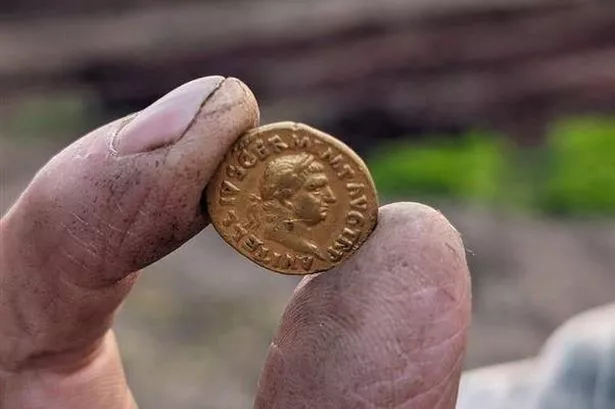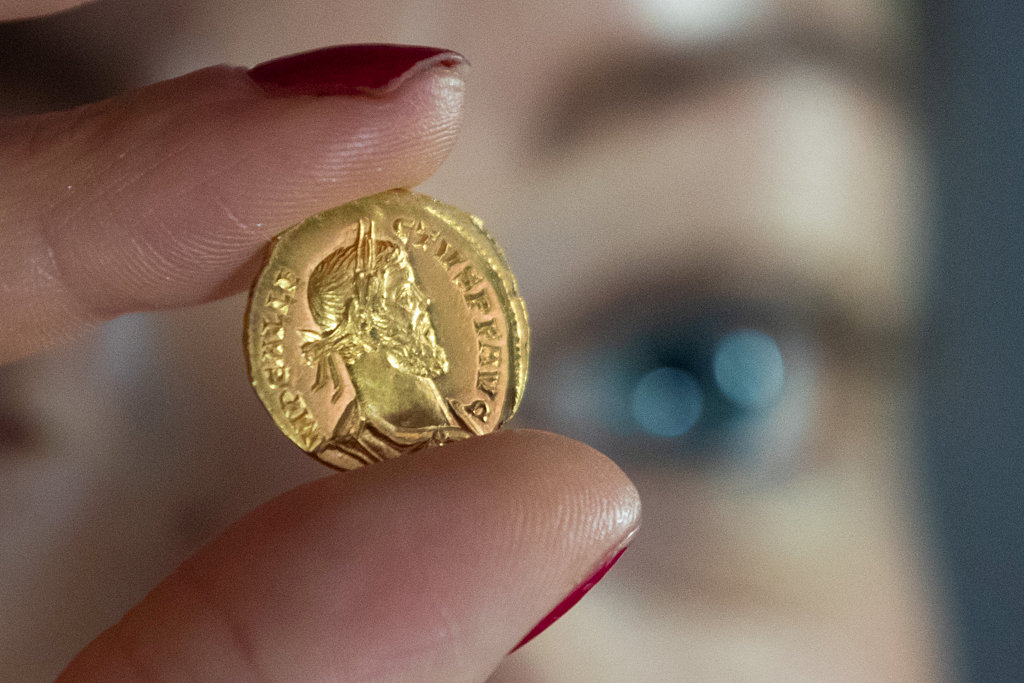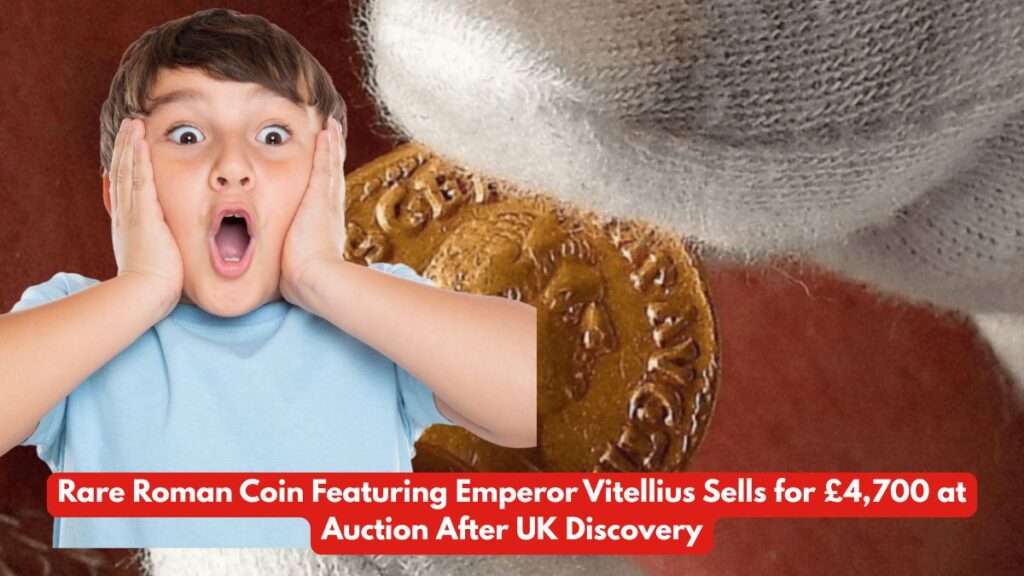A rare 2,000-year-old Roman gold coin featuring Emperor Aulus Vitellius has captured the attention of historians and collectors alike after selling for £4,700 at a UK auction. The ancient artefact, uncovered in the West Midlands, provides a tangible link to one of Rome’s most turbulent eras.
Discovered by Local Metal Detectorist
The coin was discovered in 2024 by 76-year-old Ron Walters, a hobbyist metal detectorist from Kingswinford, West Midlands. While scanning fields near Wall Heath in Dudley, Walters stumbled upon the gleaming piece of history buried beneath the soil.
“I couldn’t believe what I’d found. It looked Roman, and I knew it was old, but I never imagined it would be this valuable,” Walters told local media.

Auction at Fieldings in Stourbridge
The gold coin was later authenticated and offered at auction by Fieldings Auctioneers in Stourbridge. It attracted significant interest from collectors due to its rarity and historical significance.
Eventually, a private buyer from Scotland secured the piece with a winning bid of £4,700.
Learn more about UK treasure laws and reporting finds at the Portable Antiquities Scheme (PAS) run by the British Museum and Historic England.
Emperor Vitellius: A Brief Reign During Chaos
The coin features the portrait of Aulus Vitellius, who ruled for a brief period in 69 AD—known historically as the “Year of the Four Emperors.” Vitellius succeeded Emperor Otho and reigned for only eight months before being overthrown by Vespasian, founder of the Flavian dynasty.
Despite the brevity of his rule, Vitellius minted various coins to solidify his legitimacy and presence as emperor. These coins typically depict his laureate head on the obverse (front), while the reverse side showcases Roman deities like Concordia, symbolizing harmony and unity—a poignant irony given the era’s civil unrest.
For a historical overview of Vitellius’s reign, consult The British Museum’s collection or Livius.org’s biography of Vitellius.
The Coin Market: A Collector’s Dream
Coins minted during Vitellius’s reign are rare, especially in gold. The majority are silver denarii, while gold aurei—like the one discovered—are considerably more valuable due to their scarcity and condition.
Typical prices for Vitellius denarii range between $400 and $1,300, depending on quality and rarity, according to recent listings on CoinArchives.com. Gold aurei, due to their composition and historic nature, can fetch several thousand pounds at auction.
Experts believe the £4,700 sale price reflects strong collector interest, driven by the coin’s condition and the story behind its discovery.
Legal and Historical Implications
Under UK law, anyone who finds a treasure-like item must report it under the Treasure Act 1996. However, since this coin was a single gold piece and not part of a hoard, it was not classified as official treasure and could be privately sold.
For more information on legal requirements regarding found artefacts, visit the UK Government’s Treasure Act page.
Walters followed proper protocols, ensuring the coin was assessed and valued before it reached the auction block.

Insights from Ancient Currency
Coins from the Roman Empire do more than just tell economic stories—they carry political and cultural messages. The imagery chosen by Vitellius aimed to solidify his rule, despite political instability and rebellion across the empire.
“Coins like these are not just money—they’re propaganda. They’re statements of power, legitimacy, and connection to the divine,” said Dr. Elaine Hughes, a Roman history expert from the University of Birmingham.
Final Thoughts
The sale of the Emperor Vitellius coin is not just a triumph for a dedicated metal detectorist—it’s a reminder of the living legacy beneath our feet. These ancient treasures continue to captivate collectors and scholars, shedding light on the lives, reigns, and stories that shaped the Roman Empire.
This article has been carefully fact-checked by our editorial team to ensure accuracy and eliminate any misleading information. We are committed to maintaining the highest standards of integrity in our content.

Himanshu Sharma writes for Weekend Spy, focusing on recruitment, government schemes, and current affairs. He is dedicated to making complex information accessible to readers.
Himanshu enjoys playing chess, hiking, and trying new recipes, always seeking ways to combine his love for writing with his passion for exploration. Connect with Drop him an email at [email protected].







